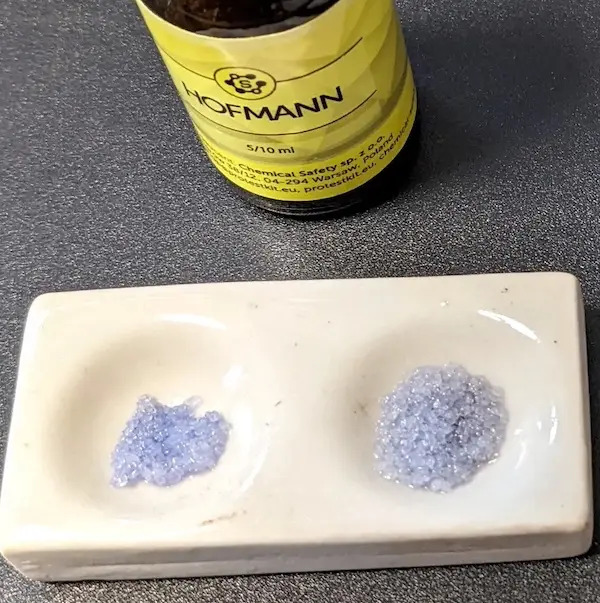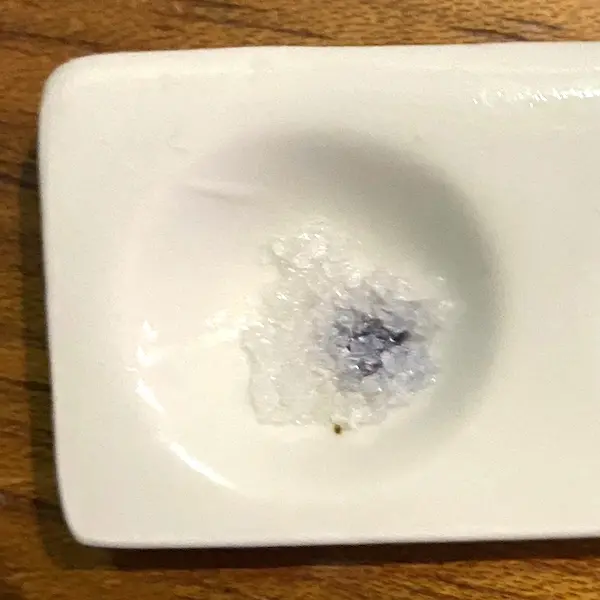Color change reactions of Hofmann reagent with LSD
What is Hofmann reagent?
Hofmann reagent test (often misspelled as “Hoffman” or “Hoffmann”) is named after the inventor of LSD-25, the Swiss chemist Albert Hofmann. It is primarily used for the identification of psychedelic indoles such as lysergamides and tryptamines. Together with Ehrlich’s reagent, it forms the foundation of testing for LSD, DMT, and their derivatives.
In scientific literature, this reagent is generally referred to as the Van Urk reagent or p-DMAB-ts (Test Solution). It contains sulfuric acid, p-DMAB (para-dimethylaminobenzaldehyde), and ferric chloride. PRO Test uses a slightly modified formula, which offers increased sensitivity and faster reaction time.
This colorimetric test is a modification of the Ehrlich reagent, characterized by a broader range of color reactions that allow for distinguishing many common indoles — for example, melatonin from LSD and DMT. While the Ehrlich reagent is more popular than Hofmann’s, it typically produces a single color with both psychoactive and non-active indoles. In contrast, Hofmann reagent reacts with non-lysergamide indoles by turning yellow-green, whereas lysergamides are expected to produce a deep blue color. However, exceptions do occur and will be discussed below.
Color reactions of Hofmann reagent with LSD
The Hofmann reagent serves as a simple colorimetric test for the preliminary identification of indoles, and as such, carries a risk of ambiguous results. In this article, we focus on the range of reaction colors observed with LSD.

Strong reactions of Hofmann reagent with LSD

Weak reaction of Hofmann reagent with LSD

Purple reaction of Hofmann reagent test with LSD

Grey reaction of Hofmann reagent test with LSD

Brown color reaction of Hofmann reagent with LSD
When is it best to use Hofmann reagent test?
The Hofmann reagent is best used alongside the Ehrlich test. No single reagent is 100% reliable, so make sure you have several reagents in your LSD testing kit or DMT test kit. Based on thousands of lab test results, it can generally be assumed that a sample confirmed to contain LSD has a negligible chance of also containing a non-trace amount of another psychoactive substance.
If you’re testing lysergamides or tryptamines and the result is negative, be sure to learn how to avoid unwanted phenethylamines such as NBOMe or DOC. To rule out their presence, you should use at least two of the following reagents: Marquis, Mecke, Liebermann, or Froehde — all of which are available in our LSD reagent kit or DMT testing kit. When using reagent tests to rule out phenethylamines, look for an immediate and vivid color change. Do not confuse a true positive reaction with a false positive — a weak, slow burn of organic material caused by the corrosive nature of some reagent tests.
Sources used in this article:
- https://en.wikipedia.org/wiki/Ehrlich%27s_reagent
- https://www.reddit.com/r/ReagentTesting/comments/1ieb2vc/hofmann_turning_green_gray_with_dark_blotter_lsd/
- https://www.reddit.com/r/ReagentTesting/comments/1iaxeni/need_help_determining_my_acid_tabs_are_real/
- https://www.reddit.com/r/ReagentTesting/comments/1l4ddv9/hofmann_turning_grey_with_lsd/
- Photos submitted directly to PRO Test
LSD and DMT test kit :
No test kit results can guarantee if a substance is safe. No substance is 100% safe.



